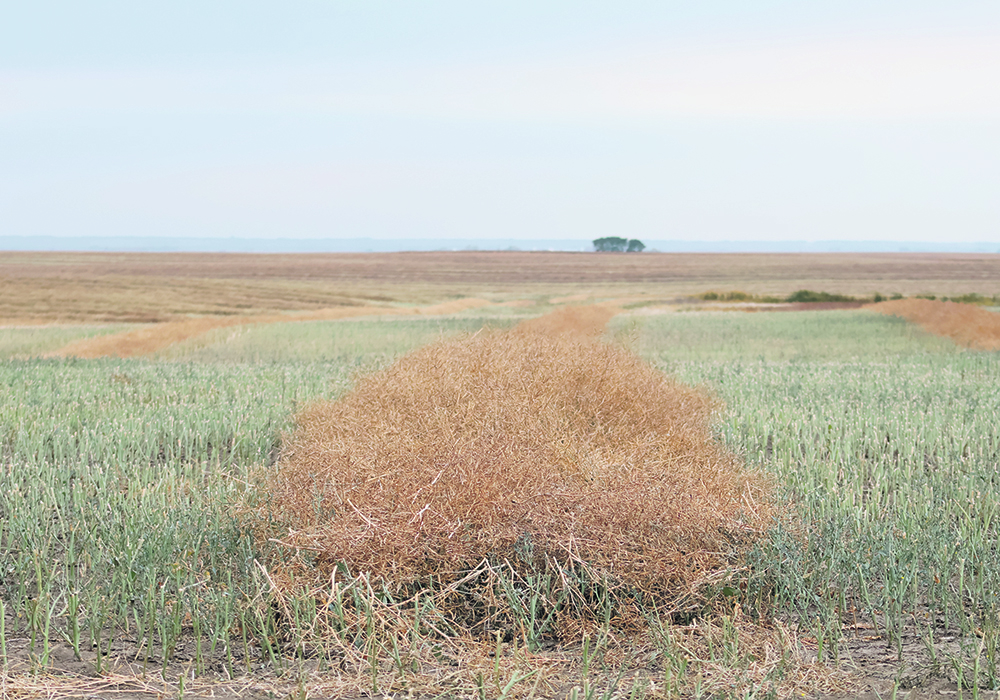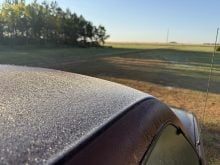Dry conditions across the region continue to leave many producers without adequate soil moisture as harvest wraps up
Harvest continues across the Prairies with completion rates continuing to surpass provincial and regional five-year averages.
Producers in Alberta are 65 percent complete, a 21 percent increase compared to last week, according to the Alberta crop report released on Sept. 22.
Producers in the south are nearly 91 percent finished on all crops, an increase of 11 percent over the average. Central region producers are nearly 66 percent complete, 12 percent over the average. Producers in the Peace region have surpassed their five-year average by 27 percent and are nearly 60 percent complete. Northeast producers are 12 percent over their five-year average, currently sitting at 56 percent. Northwest producers are only seeing a five percent increase over the average and are currently sitting at a little over 40 percent complete for all crops.
Read Also

Trump’s tariffs take their toll on U.S. producers
U.S. farmers say Trump’s tariffs have been devastating for growers in that country.
An increase in expected yields are surprising Alberta producers. Barley expectations have increased by 2.4 per bushel per acre and canola by 1.9 bu. per acre. This has significantly improved the five-year average, bringing this year’s expectations to 91 percent of the provincial average.
Regionally, northeast and northwest yield expectations have surpassed five-year yield averages for the region at 102 percent and 113 percent, respectively. South, central and Peace regions are sitting at 69, 82, and 96 percent of five-year yield averages for their region but have also seen some up swings from recent weeks.
Saskatchewan producers are now 82 percent done the 2023 harvest season with producers in the southwest region nearly finished harvest with only a few flax acres remaining. Farmers across the province are surpassing the five- and 10-year averages of 64 and 62 percent, respectively.
The west-central region is 92 percent complete, followed by the southeast region at 79 percent. The northeast and northwest regions are 75 percent complete and harvest in the east-central region is 66 percent complete.
Canola producers in Saskatchewan have 65 percent of acres in the bin. Durum, barley and spring wheat are at 94, 92 and 88 percent complete, respectively.
Other regions of the province are making headway ahead of the colder weather, but light frosts last week have caused damage.
Manitoba producers are 64 percent complete throughout the province, ahead of the five-year provincial average of 54 percent for this time of year. Harvest of spring wheat, barley and oats are nearly complete in Manitoba, with significant yield outliers affecting the average. Yields range from 35 to 70 bu. per acre for spring wheat, 90 to 130 bu. per acre for oats and 70 to 100 bu. per acre for barley.
About 75 percent of canola has been harvested in the central region.
Dry conditions across the Prairies are leaving many producers without adequate soil moisture.
In Alberta, 33 percent of soil is rated as having good to excellent sub-surface moisture, a week-to-week decrease of two percent. Improvements in the south and northwest regions are seeing soil conditions improve, while central, northeast and Peace regions have seen soil quality reduced.
Saskatchewan topsoil quality continues to decrease with very little rain. Only 25 percent of cropland has adequate topsoil moisture, with 31 percent reporting fair quality, 49 percent poor quality and 22 percent in very poor quality.
Pasture land in Saskatchewan is showing little change, with 12 percent in good condition, 31 percent rated at fair and 22 percent in poor condition.
The provincial report noted a significant need for multiple rainfall events to improve soil conditions.
Topsoil conditions from zero to 30 centimetres remain dry to very dry for most of Manitoba with some isolated local conditions showing optimal to wet conditions.
Information for this article is taken from weekly crop reports put out by provincial governments. This week’s information is based on crop statistics as of Sept. 18-19 depending on the provincial recording time frame.















